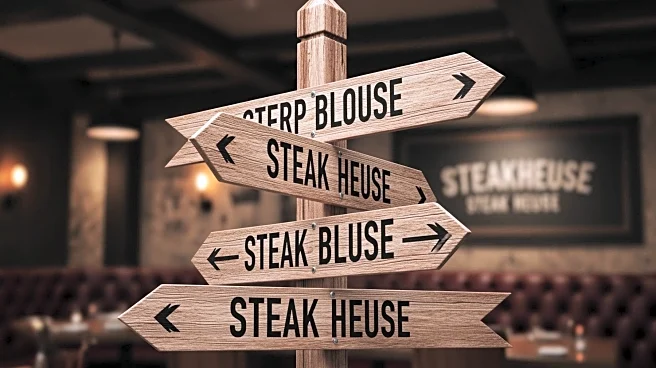What's Happening?
Outback Steakhouse, a popular dining chain, is set to close more than 40 of its locations across the United States as part of a strategic plan to improve its financial health. The closures were detailed
in an earnings report released by Bloomin’ Brands, the parent company of Outback Steakhouse. In October, 21 locations were closed, and the company plans not to renew leases for an additional 22 locations over the next four years. This decision is part of a broader effort to cut costs in non-guest facing areas and reduce debt. The company is also investing in facility upgrades and staff improvements to enhance the guest experience and reshape its brand image.
Why It's Important?
The closure of these Outback Steakhouse locations reflects broader challenges within the restaurant industry, where chains are struggling to maintain profitability amid changing consumer preferences and economic pressures. By reducing its footprint, Outback aims to streamline operations and focus resources on improving customer experience and brand appeal. This move could impact local economies, particularly in areas where the restaurant serves as a significant employer. Additionally, the closures highlight a trend of consolidation within the industry, as other chains like Red Robin and On the Border have also announced similar plans.
What's Next?
Bloomin’ Brands will continue to implement its turnaround strategy, focusing on enhancing the guest experience and paying down debt. The company may face reactions from stakeholders, including employees affected by the closures and communities losing a local dining option. As Outback works to reshape its image, it will likely seek to attract new customers and retain former patrons through improved service and facilities. The success of these efforts will be crucial in determining the future stability and growth of the chain.
Beyond the Headlines
The decision to close multiple locations may have deeper implications for the restaurant industry, signaling a shift towards more sustainable business models that prioritize quality over quantity. This could lead to a reevaluation of how chains operate, with a focus on innovation and customer-centric strategies. The closures also raise questions about the long-term viability of large-scale restaurant chains in an increasingly competitive market.












